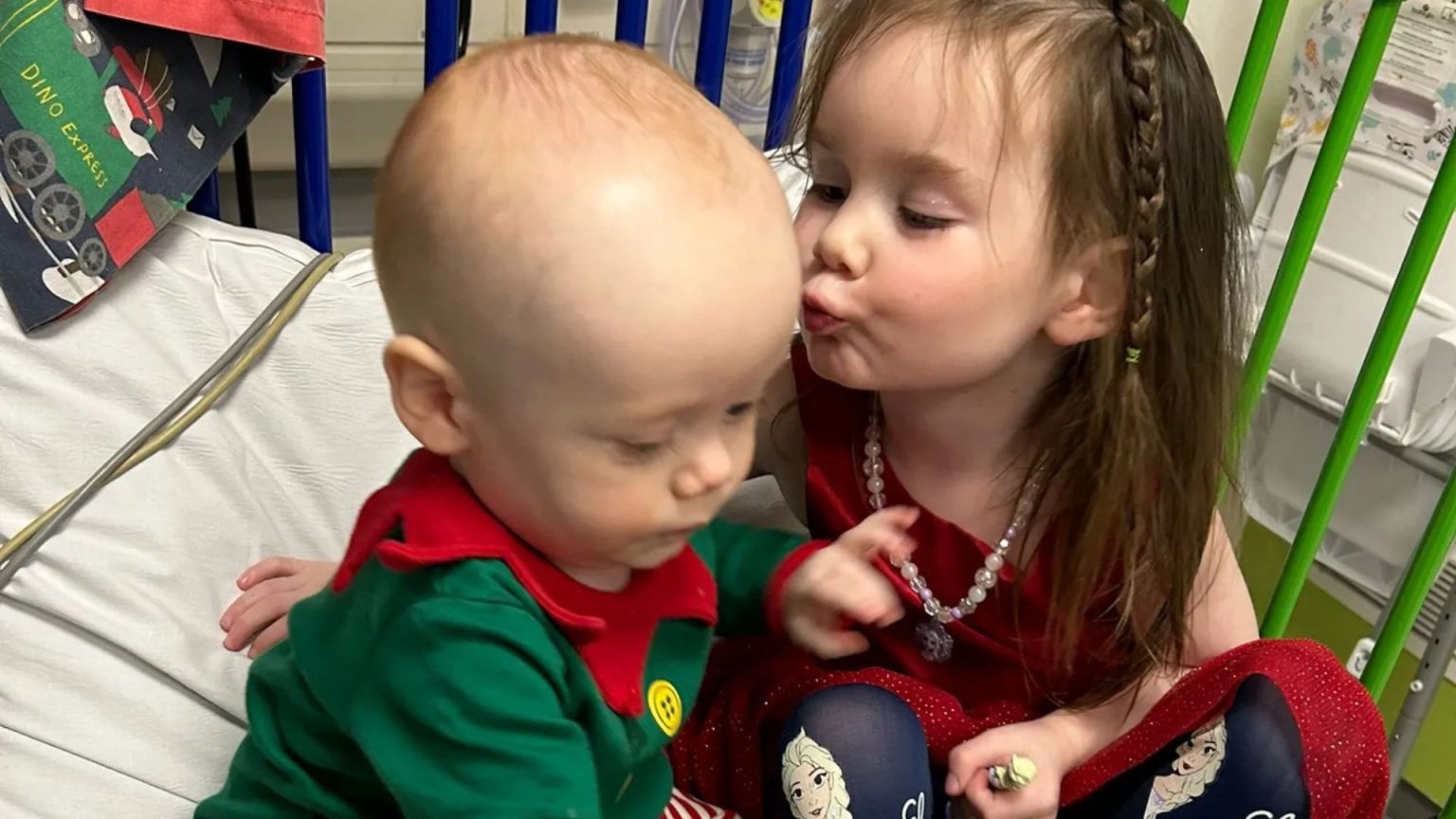Fifteen-month-old Ezra Crawford, the youngest person in Britain currently reliant on an artificial heart, faces a precarious future as his family desperately awaits a life-saving heart transplant. Ezra’s existence is sustained by a Berlin Heart, a ventricular assist device, which took over the function of his own heart after it was damaged by a virus in August of last year. This complex medical apparatus keeps him alive, but it is not a permanent solution. The constant hum of the machine and the sterile hospital environment have become Ezra’s world, a stark contrast to the lively home he shares with his loving family in Durham. His three-year-old sister, Freya, poignantly captures the family’s yearning for normalcy, repeatedly asking doctors when her baby brother can finally come home.
The emotional toll of Ezra’s condition weighs heavily on his parents, Bianca and Will Crawford. Every day is fraught with anxiety, as the risk of a stroke looms large while Ezra remains connected to the Berlin Heart. The device, while a marvel of modern medicine, is a temporary bridge to a permanent solution – a heart transplant. Bianca and Will understand that a transplant is Ezra’s sole chance of survival, a beacon of hope amidst the uncertainty. Their plea resonates with urgency, a desperate call for a suitable donor to offer their child a second chance at life. Christmas Day, traditionally a time of joyful family gatherings, was spent huddled around Ezra in the Newcastle hospital, a poignant reminder of the fragility of his health and the unwavering love that binds their family together.
The Crawford family’s story highlights the critical shortage of organ donors, a reality that tragically impacts countless lives. While medical technology has made remarkable strides in supporting patients like Ezra, the ultimate solution often lies in the generosity of others. The decision to become an organ donor is a profound act of altruism, a gift that can transform lives and offer hope where there was once despair. Ezra’s situation underscores the vital need for increased awareness and open conversations about organ donation.
The complexity of Ezra’s case also brings into focus the advancements in artificial heart technology. The Berlin Heart, while a temporary solution, represents a critical lifeline for children like Ezra, bridging the gap until a suitable donor heart becomes available. These devices, though life-sustaining, are not without risks, as evidenced by the constant threat of stroke and other complications. The development and refinement of such technologies offer a glimmer of hope for patients awaiting transplants, offering them a chance to survive and even thrive while the search for a donor continues.
Beyond the technological marvels and medical complexities, Ezra’s story is fundamentally a story of family, resilience, and unwavering hope. The image of Freya, a young child grappling with the gravity of her brother’s illness, pleading for his return home, is a testament to the powerful bonds of sibling love. Bianca and Will’s unwavering dedication, their steadfast vigil by Ezra’s side, embodies the strength and resilience of parents facing unimaginable challenges. Their plea for a donor is not simply a medical request, but a heartfelt cry for their son to experience a full and healthy life.
The Crawford family’s story serves as a poignant reminder of the importance of organ donation and the transformative power of medical advancements. Ezra’s journey is a testament to the resilience of the human spirit, the strength of family bonds, and the unwavering hope that sustains them through adversity. Their story echoes a universal plea for compassion, generosity, and a collective effort to address the critical need for organ donors, offering children like Ezra the chance to live, thrive, and experience the simple joys of childhood.


